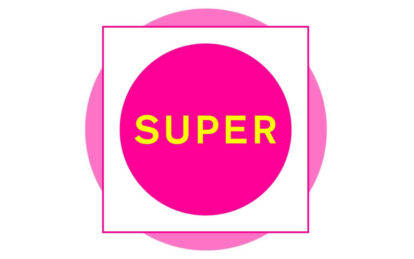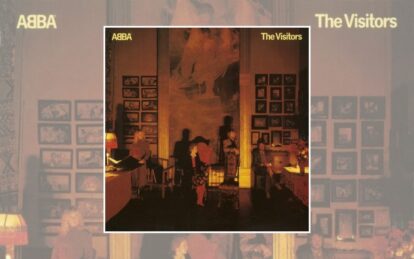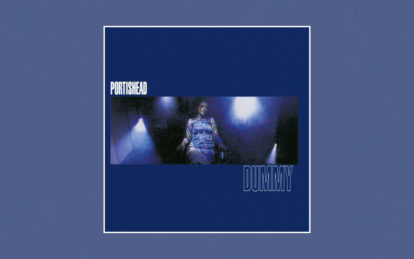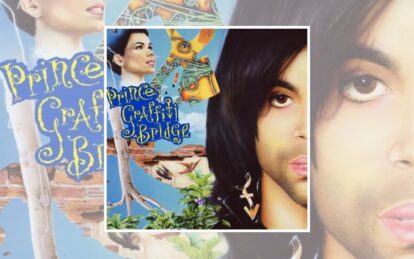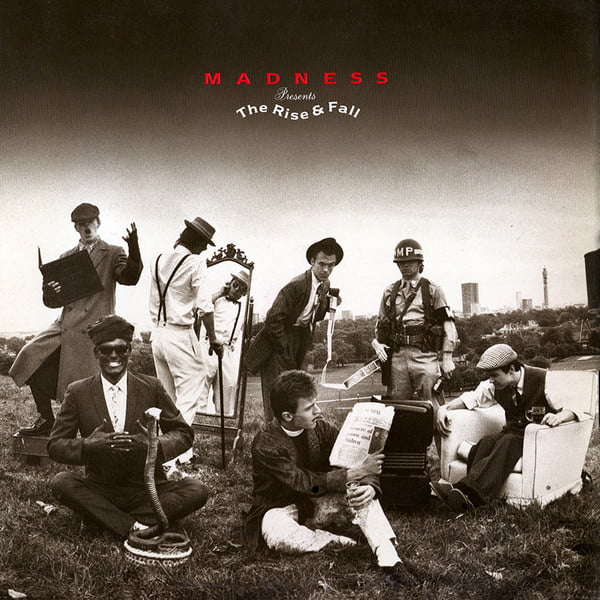
Madness: The Rise & Fall cover
Buoyed by having their first No.1 hit, the fourth studio album by Madness, The Rise & Fall, marked the transition between knockabout Nutty Boys and reflective men who’d become hard-bitten by success…
In a parallel universe, Madness could have made The Lexicon Of Love. In the summer of 1982, they were planning something different. Following on from the No.1 success of House Of Fun, Madness didn’t want to get complacent, believing that trying a new producer after three records with Clive Langer and Alan Winstanley might be a good move. They met with Trevor Horn.
“We got the feeling Trevor couldn’t do much for us,” recalled guitarist Chrissy Boy. “He felt our records were fine the way they were.” The Rise & Fall was duly produced by Langer & Winstanley, who had no hard feelings of being second choice. Clive told Classic Pop: “They didn’t feel the same in the studio with Trevor. Coming back to us helped our relationship blossom. Over the years, all that’s changed between us is that the trust has got deeper.”
It was no wonder the meeting was suggested, as Trevor was clearly a Madness fan. Clive recalled: “We’d put a pizzicato motif in It Must Be Love with Madness. Suddenly it was in ABC’s The Look Of Love too. I met Trevor not long after and he told me: ‘I really like what you did on It Must Be Love.’ I told him: ‘Yeah, I noticed.’ But Trevor’s records always sounded fantastic.”
Recording on The Rise & Fall began in August 1982, just three months after their first No.1 single. In between, Madness released Driving In My Car, played in Japan, completed the usual whirl of TV appearances and played special gigs for The Prince’s Trust and at London pub venue The Bull And Gate, scene of some of Madness’ earliest shows.
With an Australian tour looming in October and the album scheduled for a November release, recording time at Beatles producer George Martin’s Air Studios in London was tight. There was still time to muck about: Chrissy Boy taught Paul McCartney how to play Air’s arcade game Asteroids, while drummer Woody helped The Human League figure out how to get the most from their new drum machine as the League tried to follow up Dare.
Such escapades were a diversion from Madness’ first classic album. The claim that Madness were only a singles band is unfair, if only because there are hardly any artists whose albums have 10 songs of the same quality as Madness’ singles. They couldn’t really be blamed for not matching the brilliance of those hits.
If Madness’ first three albums One Step Beyond, Absolutely and 7 were occasionally patchy, it’s a trait their producers were aware of.
Clive explained: “With the help of Stiff Records head Dave Robinson, you quickly learned what a single was. You get confidence with hits and we’d focus on tracks that sounded like they could be singles.”
Generally, it was obvious which songs were potential smashes. “You could tell the singles pretty quickly,” stated Alan. “Even at the first Madness rehearsal I ever went to, I knew My Girl was a hit song. Baggy Trousers obviously sounded like a hit, and so did Our House.”
Clive said of his production: “You’d pull out all the stops for a Wings Of A Dove, because you knew it was better than the track next to it.” But that didn’t exactly apply on The Rise & Fall, even with a song as classic as Our House on the album.
Here, Madness focussed on making every song as good as the ones around it. As Chrissy Boy said: “The Rise & Fall is known by the band as our Sgt Pepper. It’s an incredibly complex album, breaking new ground with every song.”
Suggs says of The Rise & Fall: “It was the first album we made that was an album, not just a collection of songs,” and that’s borne out by Madness starting to vary the mood.
No longer did every Madness song have to start out with the intention of sounding like a single. If some of the album tracks on 7 had simply sounded like failed singles, there’s a maturity to The Rise & Fall that doesn’t lose Madness’ inherent gift for melody, but expands their horizons of what pop music can be. The lovelorn That Face could have the same narrator as My Girl, but now he’s alone after one too many fights and his looks are starting to fade.
Whereas My Girl was musically prime Nutty Boys to mask any serious lyrical intent, That Face is more Steely Dan than Prince Buster, Mike Barson’s moody keyboards suggesting there was real darkness either happening right now or about to intrude on Madness’ larky lifestyle. Are You Coming (With Me) is similarly poignant, its tale of worrying about a troubled friend given a suitably melancholic accompaniment where everyone involved is playing their heart out, yet not a single note is wasted.
It’s a galaxy away from One Step Beyond and could never have been a single, yet is one of Madness’ finest songs in a catalogue full of fine songs.
“We were definitely conscious of a change while making The Rise & Fall,” reflected Chrissy Boy. “Maybe everyone was a bit mad at the time. I don’t think I was too happy.” Those two songs were among the last to be made for The Rise & Fall, which famously began life as a concept album.
Read more: 40 years of 2 Tone
Read more: Top 20 Adam Ant songs
Chas Smash had the idea for all seven members to write about their childhood, as Madness’ early life around North London was of a working-class sub-culture that just wasn’t found in the often middle-class art-school regular pop star.
Once everyone’s stories were collated, the concept mutated: songs like Sunday Morning, Our House, Rise & Fall and Primrose Hill seemed like they could be describing the same person at different ages.
Throw in Lee’s pitch-black protest song Blue-Skinned Beast and it was felt Madness had the foundations for a concept album about madness itself, topped off by the hero of Mr Speaker (Gets The Word) escaping from a mental health unit.
There was talk of adding lines of dialogue to develop the narrative. But the idea was eventually scrapped because it was starting to seem too forced, that it was becoming more about writing songs to fit a story starting to feel unnatural, rather than making the songs as good as they could be.
Their frustrations were summed up in Madness (Is All In The Mind), written by Chrissy Boy when the idea of a concept album about madness was mooted. It was the most explicit response to the notion Madness were the perennial Nutty Boys who’d forever be clowning around in Dave Robinson’s videos.
Of course, there was still room for clowning around in Dave Robinson’s videos too, at least for Our House. One of only two singles from the album alongside Tomorrow’s (Just Another Day), it was written by Chas Smash as an example of how the childhood concept album could work.
Named after a Crosby, Stills, Nash And Young song which Chas loved, it describes his teenage family life in the North London suburb of Finchley. The line “Brother’s got a date to keep, he can’t hang around” is actually about the police sometimes turning up to the Smash household, where Chas’ delinquent older brother would escape through the back garden.
Read more: Essential Eurythmics songs
Read more: Best Human League songs
Although widely regarded as the best Madness album of their first incarnation, The Rise & Fall only reached No.10 on its release in November 1982, five places lower than 7 the previous year. It was too soon after Madness’ first singles compilation Complete Madness, issued just six months earlier in April.
The change in mood from that celebration and House Of Fun proved to be too much of a switchback for some fans. Maybe its release should have been held back to give people chance to adjust. But for a band as restless as Madness, that was never going to be an option.
Madness – The Rise & Fall songs
RISE AND FALL
Along with Our House, the title track of Madness’ fourth album most explicitly fulfils its concept album remit of exploring childhood. Musically in the same mid-paced vein as Shut Up, Suggs’ narrator sets the tone for looking back on a life, reminiscing about his experiences before and after a recent unspecified disaster. “I can recall forgotten moments/ The rise and fall,” sings Suggs, as Madness’ classic gets underway in grand style.
TOMORROW’S (JUST ANOTHER DAY)
The album’s second single reached No.8. “It did well, but I thought it was going to be No.1,” said Chrissy Boy. “It was one of my favourite singles. I thought: ‘This is the one.’” Written about the monotony of working life, Suggs commented: “It was about the downness of life. Then we did the video and it was, wallop, off we go!” Elvis Costello guested on a slower version which featured on the 12” single.
BLUE-SKINNED BEAST
A rare solo Lee Thompson-penned song, Blue-Skinned Beast is unusually political. It was performed on several TV appearances around the release of Tomorrow’s (Just Another Day) in early 1983, including BBC2’s Oxford Roadshow. Inspired by the Falklands war, the song’s title is often wrongly assumed to refer to the blue of Margaret Thatcher’s Conservative party. It actually references the blue body bags soldiers killed in battle were flown home in.
PRIMROSE HILL
A textbook Suggs character study co-written with Chrissy Boy, Primrose Hill fits better than many songs into the album’s original London life concept, even if it is about an older man than the original idea of chronicling Madness’ childhood, depicting a pensioner nostalgic for lost possibilities. The jaunty piano and brass are musically of a piece with Tomorrow’s (Just Another Day), and it would have been a fine third single from the album.
MR SPEAKER (GETS THE WORD)
Another Suggs study, Mr Speaker is an escaped in-patient who can “spread the word that he has found” after fleeing Colney Hatch Lunatic Asylum. The real-life institution was later renamed Friern Hospital. It was London’s most famous mental health unit, written about by PG Wodehouse in Jeeves And Wooster and CS Lewis in The Chronicles Of Narnia. Since Friern Hospital closed in 1993, the site has been converted into luxury housing.
SUNDAY MORNING
Although lyrically Sunday Morning is relatively routine, about coping with a hangover after Saturday’s mischief and waiting for Sunday dinner, musically the Woody-penned song is highly offbeat. It starts like it’s a rare foray into straight-ahead New Wave, settles into smooth Grey Day-style contemplation underpinned by Lee Thompson’s sax, then the New Wave riffs keep stabbing their way back in. It evokes a hangover all too accurately and is wonderfully unsettling.
OUR HOUSE
An all-time classic, the influence of Our House has been kept alive by numerous adverts, including for Virgin Media, Very and Courts Furniture. Aston Villa fans have recently adapted it for cult centre-half Kortney Hause with the chant “Our Hause in the middle of defence.” Madness’ biggest US hit is one of the worthiest winners of Best Pop Song from The Ivor Novello Awards, scooping the prize in 1983.
TIPTOES
What starts out as a reggae lilt soon becomes as claustrophobic as Cardiac Arrest in its panicky, rushed tempo, describing a man driven to suicide by his nightmares. Or is he? Suggs’ lyrics are atypically opaque for unpicking the reality of its narrator’s fate. Having seemingly jumped off a roof – “All the dreams in nights before told him he must go” – the final verse’s statement “His questions and himself nearly fell on stony ground” suggest a different fate.
NEW DELHI
Written solely by Mike Barson, Suggs joked the hazy recollection of travelling around India was the furthest tune on The Rise And Fall from the album’s original concept. “We were going to write about growing up in London, then Mike started writing about New Delhi,” as Suggs claimed. The arrangements are closer to Blancmange than regular Madness, but it’s not one of their finest songs; a rare example of the filler Madness are often accused of.
THAT FACE
A bridge between early Madness and the melancholic iteration that followed, Lee Thompson’s spiky sax and Mike Barson’s rolling piano mask a reflective Suggs lyric wondering why his lover has left, as he looks in the mirror and notices just how much and rapidly he’s ageing. Bedders’ bass is superb, twisting every which way to follow and set the song’s mood. That Face could have easily been a single if it had landed on Mad Not Mad instead.
CALLING CARDS
Of course Madness would often pretend to be actual gangsters in their lyrics at some point, and Calling Cards is worthy of the prospect. With Suggs casting himself as a minor crime face on the Old Kent Road, he claims he knows of a sorting office which would make for an ideal robbery. In reality it’s knockabout Ealing comedy, much more The Ladykillers than The Krays. The track is propelled by a mighty Mike Barson piano solo in an attempt to disrupt the otherwise Driving In My Car tempo of the track.
ARE YOU COMING (WITH ME)
Written by Lee Thompson and Mike Barson, Are You Coming (With Me) feels like a sober, sombre fitting real end to The Rise And Fall before the poppier epilogue of Madness (Is All In The Mind). A tale of being worried for a friend who’s wasting his life, it’s typical of the album’s newfound maturity, while the band have rarely sounded fuller before or since. Too moody for a single, perhaps, but it’s one of Madness’ finest album tracks.
MADNESS (IS ALL IN THE MIND)
Absolutely nothing to do with the Prince Buster song that gave the band their name, Chrissy Boy’s sardonic response to the public perception that Madness were just a bunch of lightweight Nutty Boys is given extra menace by having Chas Smash replace Suggs as main vocalist. Although it was nominally the double A-Side of Tomorrow’s (Just Another Day), there’s no video to accompany its supposed single status.
Check out Madness’ official website here
Classic Pop may earn commission from the links on this page, but we only feature products we think you will enjoy.


